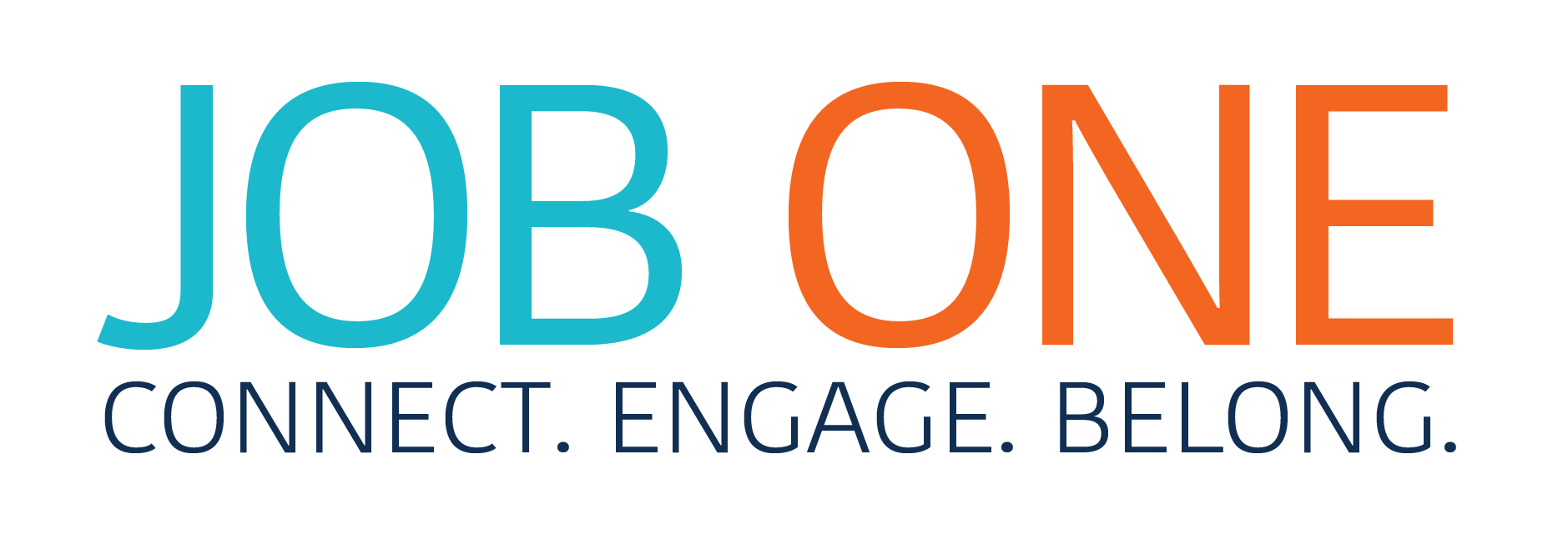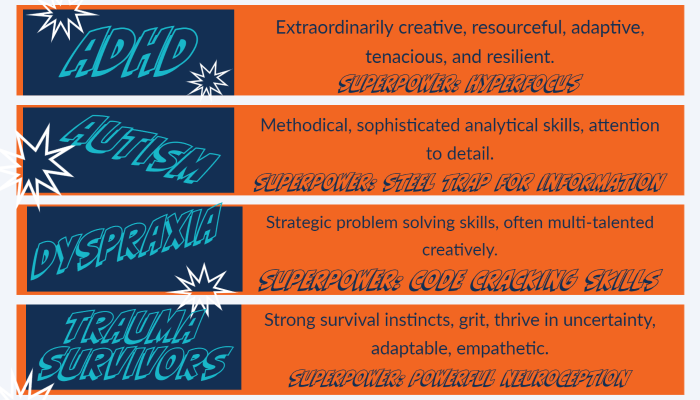A huge thank you to our friends at the Greater Kansas City Chamber of Commerce for inviting Job One to be a featured speaker at their Diversity & Inclusion Workshop Series. Our topic, Neurodiversity: Superpowers & Kryptonite, when hiring an individual with a developmental disability, reviewed the following topics:
•Explore how your business goals and culture can benefit from neurodiversity.
•What does neurodiversity look like in the workplace? What tools are needed to create and support a neurodiverse business?
•How do businesses avoid sabotaging a neurodiverse hire?
•Are you a cultural hire box-checker?
•Neurodiversity works! Hear real life success stories from local businesses
If you wish to continue this discussion or want to learn more about education, training, or opportunities for a neuro diverse hire, please reach out to [email protected]
Resources and expanded information from today’s presentation are listed below.
POLL:
CDC
ADHD:
Attention Deficit Disorder Association. ADHD at Work.
AUTISM:
“Employer Guide to Supervising Individuals with Autism”
DYSPRAXIA:
Dyspraxia Foundation
TRAUMA SURVIVOR:
World Health Organization
“Are we ready to support survivors of childhood trauma in the workplace?”
“Trauma and How it Can Adversely Affect the Workplace”. Government Technology
INCREASING NEURO DIVERSITY:
Strengths Finder
Redesigning Work Buckingham and Clifton (2001) argued that great organizations allow their employees to work on their strengths every day. Moreover, they state that a person will never be able to turn a weakness into a strength, so individuals and organizations should focus on developing strengths – not trying to develop weaknesses – as this presents the greatest opportunity for growth.
Job Design The best way to re-design work to focus on strengths is to examine the job’s design. Job design explains how work, tasks, and roles are structured, enacted, and changed within an organization. Job design describes the way the work gets done, and defines how structures are established between individuals, groups, and the organization itself. Most of the time, job design is done using a top-down approach. The organization creates positions and then hires people with the knowledge, skills and abilities to perform those duties. In a classical job redesign, a manager decides to change something about the work with little input from the individual (Grant, 2010). However, people have several strategies they can use to benefit more from their strengths at work.
Job Crafting One way individuals can change their job duties is called job crafting. Tims and Bakker (2010) describe job crafting as a form of behavior in which individuals consciously initiate changes in their job demands and job resources so as to make the job fit their own knowledge, skills, abilities, and long-term goals. Job crafting is achieved by having employees choose their job tasks, negotiate different job functions or change the meaning of the tasks they perform.
Eliminating Duties Employees could decrease demand for different parts of their position. In other words, they can just stop doing the work that they are weak at and see if anyone cares. This could happen for a number of reasons including that the person has reached their capacity, or that the person dislikes that aspect of their job. Eliminating non-essential duties for a job may increase an employee’s motivation and free up time and energy to increase duties that play to the person’s strengths.
Idiosyncratic Deals Another way people can shape their role is to keep offering to do tasks that play to their strengths. This is also known as idiosyncratic deals, which occur when individuals openly negotiate personal arrangements for their job with their employer (Tims & Bakker, 2010, p. 13).
Role Innovation A person can try to find ways to use their strengths to compensate for their weaknesses. Role innovation can help the employee change their job by changing the mission or purpose of their work.
Cross-Training Next, the individual can try to pair his or her weakness with someone who has a strength in that area. One way to accomplish this is through cross-training, which allows work to be more interesting and also affects the way employees respond to their jobs. Cross-training provides opportunities for employees to experience a change in pace and activities.
Changing Positions Finally, the person can change jobs to one that is more ADHD-friendly. Weiss, Hechtman, & Weiss (1999) discovered that jobs that were flexible in their daily routine or where the person was self-employed seemed to be good fit. However, positions that were more oriented toward production and were repetitive in nature were not a good match.
A Culture of Empowerment Makes All the Difference The culture in the workplace can have a great effect on a person’s ability to thrive or perish. Firms that see employees as a strategic partner and not a cost of doing business are successful in outmaneuvering their competitors. This means that a company has to work with people and not replace them or limit their ability to do their jobs in the most effective way possible. Employee empowerment in which information is shared freely helps to encourage independent decision-making. It allows employees to participate and have control in their own job designs.
SUCCESS STORIES:
- Christian Brother’s Automotive
- KC Coffee Roasters
- The Results Company
- Xtreme Gymnastics
- Job One

